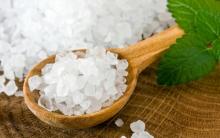on the topic of: " Technology for manufacturing semiconductor integrated circuit chips »
Discipline: “Materials Science and Electronic Materials”
Completed by a student of group 31-R
Kozlov A. N.
Head Koschinskaya E.V.
Eagle, 2004
Introduction
Part I. Analytical review
1.1 Integrated circuits
1.3 Characteristics of monocrystalline silicon
1.4 Rationale for the use of monocrystalline silicon
1.5 Technology for producing monocrystalline silicon
1.5.1 Obtaining silicon of semiconductor purity
1.5.2 Growing single crystals
1.6 Mechanical processing of monocrystalline silicon
1.6.1 Calibration
1.6.2 Orientation
1.6.3 Cutting
1.6.4 Grinding and polishing
1.6.5 Chemical etching of semiconductor wafers and substrates
1.7 Operation of dividing substrates into boards
1.7.1 Diamond scribing
1.7.2 Laser scribing
1.8 Breaking wafers into crystals
Part II. Calculation
Conclusion
Bibliography
The manufacturing technology of integrated circuits is a set of mechanical, physical, and chemical methods for processing various materials (semiconductors, dielectrics, metals), as a result of which an integrated circuit is created.
The increase in labor productivity is primarily due to the improvement of technology, the introduction of progressive technological methods, the standardization of technological equipment and tooling, and the mechanization of manual labor based on the automation of technological processes. The importance of technology in the production of semiconductor devices and ICs is especially great. It was the constant improvement of semiconductor device technology that led, at a certain stage of its development, to the creation of integrated circuits, and subsequently to their widespread production.
The production of ICs began around 1959, based on the planar technology proposed by that time. The basis of planar technology was the development of several fundamental technological methods. Along with the development of technological methods, the development of IS included research into the principles of operation of their elements, the invention of new elements, improvement of methods for purifying semiconductor materials, conducting their physical and chemical studies in order to establish such important characteristics as the limiting solubility of impurities, diffusion coefficients of donor and acceptor impurities, etc. .
In a short historical period, modern microelectronics has become one of the most important areas of scientific and technological progress. The creation of large and ultra-large integrated circuits, microprocessors and microprocessor systems made it possible to organize mass production of high-speed electronic computers, various types of electronic equipment, process control equipment, communication systems, automatic control and regulation systems and devices.
Microelectronics continues to develop at a rapid pace, both in the direction of improving semiconductor integrated technology and in the direction of using new physical phenomena.
Part I . Analytical review
1.1 Integrated circuits
In the process of development of microelectronics (ME), the nomenclature of ICs has continuously changed. The main type of ICs nowadays is semiconductor ICs.
IP classification.
Classification of IP can be made according to various criteria, but we will limit ourselves to one. Based on the manufacturing method and the resulting structure, two fundamentally different types of integrated circuits are distinguished: semiconductor and film.
A semiconductor IC is a microcircuit whose elements are made in the near-surface layer of a semiconductor substrate. These ICs form the basis of modern microelectronics.
A film IC is a microcircuit whose elements are made in the form of various kinds of films deposited on the surface of a dielectric substrate. Depending on the method of film deposition and the associated thickness, a distinction is made between thin-film ICs (film thickness up to 1-2 µm) and thick-film ICs (film thickness from 10-20 µm and above).
Since so far no combination of sputtered films makes it possible to obtain active elements such as transistors, film ICs contain only passive elements (resistors, capacitors, etc.). Therefore, the functions performed by pure film ICs are extremely limited. To overcome these limitations, the film IC is augmented with active components (individual transistors or ICs) placed on the same substrate and connected to the film elements. Then we get an IC that is called hybrid.
A hybrid IC (or GIS) is a chip that is a combination of film-based passive elements and active components located on a common dielectric substrate. The discrete components that make up a hybrid IC are called add-on components, thereby emphasizing their isolation from the main technological cycle for producing the film part of the circuit.
Another type of “mixed” IC, which combines semiconductor and film integrated elements, is called combined.
A combined IC is a microcircuit in which the active elements are made in the near-surface layer of a semiconductor crystal (like a semiconductor IC), and the passive elements are deposited in the form of films on a pre-insulated surface of the same crystal (like a film IC).
Composite ICs are beneficial when high values and high stability of resistances and capacitances are required; these requirements are easier to meet with film elements than with semiconductor elements.
In all types of ICs, interconnections of elements are carried out using thin metal strips sprayed or deposited on the surface of the substrate and in the right places in contact with the elements to be connected. The process of applying these connecting strips is called metallization, and the “pattern” of interconnections itself is called metal wiring.
This course work examines the manufacturing technology of semiconductor integrated circuit boards. A semiconductor integrated circuit is a microcircuit whose elements are made in the near-surface layer of a semiconductor substrate. These ICs form the basis of modern microelectronics. The crystal dimensions of modern semiconductor integrated circuits reach 20x20 mm; the larger the crystal area, the more multi-element IC can be placed on it. With the same crystal area, you can increase the number of elements by reducing their sizes and the distances between them.
1.2 Requirements for semiconductor substrates
Semiconductors in the form of wafers or disks cut from single crystals are called substrates. In their volume and on the surface, elements of microcircuits of electronic devices and devices are formed by methods of etching, oxidation, diffusion, epitaxy, implantation, photolithography, and other technological methods.
The quality of the substrate surface is determined by its microrelief (roughness), the crystalline perfection of the surface layers and the degree of their physical and chemical purity. The surface of the substrate is characterized by non-flatness and non-parallelism. High demands are also placed on the reverse - non-working side of the substrate. Uneven and unequal processing of both sides of the substrate leads to additional residual mechanical stresses and deformation of the crystal, which causes the plates to bend.
After mechanical treatment, a damaged layer appears in a thin near-surface layer of the substrate. In depth it can be divided into characteristic zones. For crystals of Ge, Si, GaAs and others, after cutting and grinding, at a depth of 0.3...0.5 of the average height of the irregularities, there is a relief zone in which the same types of disturbances and defects of the single-crystal structure are observed: single-crystal chips, uncrumbled blocks, cracks , protrusions and depressions of various sizes. After cutting, the defects are located mainly under the marks from the cutting edge of the diamond disk in the form of parallel tracks of accumulations of defects; in ground crystals, evenly across the cross section. In polishing, the first layer presents surface irregularities that are relatively smaller than in grinding, and unlike the ground surface, it is amorphous. The second layer is also amorphous, its depth is 2...3 times greater than the surface irregularities. The third layer is transitional from an amorphous structure to an undisturbed single crystal and may contain elastic or plastic deformations, dislocations, and in some cases cracks. In the process of processing and preparing the surface of semiconductor substrates, it is necessary to create perfect surfaces that have a high degree of plane parallelism at a given crystallographic orientation, With complete absence of a damaged layer, minimal density of surface defects, dislocations, etc. Surface contamination should be minimal.
3 Characteristics of monocrystalline silicon
Physicochemical properties of silicon
1. The optimal value of the band gap, which determined a sufficiently low concentration of intrinsic carriers and a high operating temperature.
2. A large range of actually achievable resistivities ranging from 10 -3 Ohm-cm (degenerate) to 10 5 (close to intrinsic).
3.High elastic modulus, significant rigidity (greater than, for example, steel).
18 ..Semiconductor chip manufacturing technology
Depending on the type of semiconductor technology (localization and lithography, vacuum deposition and galvanic deposition, epitaxy, diffusion, doping and etching), regions with different conductivities are obtained, which are equivalent to capacitance, or active resistances, or various semiconductor devices. By changing the concentration of impurities, it is possible to obtain a multilayer structure in the crystal that reproduces a given electrical circuit.
Currently, group methods for manufacturing semiconductor integrated circuits are used, which make it possible to produce several hundred microcircuit blanks in one technological cycle. The most widespread is the group planar method, which consists in the fact that the elements of microcircuits (capacitors, resistors, diodes and transistors) are located in the same plane or on one side of the substrate.
Let's consider the main technological processes used in the manufacture of semiconductor microcircuits (thermal oxidation, lithography, epitaxy, diffusion and ion doping).
Rice. 22. Transferring images using negative (a) and positive (b) photoresists:
1 - photomask base, 2 - opaque areas of the photomask pattern, 3 - photoresist layer, 4 - substrate
Thermal oxidation is not much different from standard technological processes known in the production of semiconductor devices. In the technology of silicon semiconductor microcircuits, oxide layers serve to insulate individual sections of the semiconductor crystal (elements, microcircuits) during subsequent technological processes.
Lithography is the most universal way of obtaining images of microcircuit elements on a semiconductor crystal and is divided into three types: optical, x-ray and electronic.
In the production of semiconductor integrated circuits, the most versatile manufacturing process is optical lithography or photolithography. The essence of the photolithography process is based on the use of photochemical phenomena that occur in photosensitive coatings (photoresists) when exposed through a mask. In Fig. 22, a shows the process of negative, and in Fig. 22, b - positive transfer of images using photoresists, and in Fig. Figure 23 shows a diagram of the photolithography process.
The entire process of photolithography using a photoresist mask consists of three main stages: the formation of photoresist layer 1 on the surface of the substrate, photoresist contact mask II, and transfer of the image from the photomask to photoresist layer III.
Photolithography can be performed using non-contact and contact methods. Non-contact photolithography, compared to contact photolithography, provides a higher degree of integration and higher requirements for photographic equipment.
The process of obtaining a microcircuit pattern using the photolithographic method is accompanied by a number of control operations provided for by the corresponding process control cards.
X-ray lithography allows for higher resolution (higher degree of integration) because the wavelength of X-rays is shorter than that of light. However, X-ray lithography requires more complex technological equipment.
Electronic lithography (electron beam exposure) is performed in special vacuum installations and allows you to obtain a high quality microcircuit pattern. This type of lithography is easily automated and has a number of advantages when producing large integrated circuits with a large (more than 105) number of elements.
Currently, semiconductor elements and microcircuit components are produced by three methods: epitaxy, thermal diffusion and ion doping.
Epitaxy is the process of growing layers with an ordered crystal structure by implementing the orienting action of the substrate crystal. Oriented layers of the new substance that naturally continue the crystal lattice of the substrate are called epitaxial layers. Epitaxial layers on the crystal are grown in vacuum. The processes of epitaxial growth of semiconductor layers are similar to the production of thin films. Epitaxy can be divided into the following stages: delivery of atoms or molecules of the layer substance to the surface of the substrate crystal and their migration along the surface; the beginning of grouping of particles of matter near surface crystallization centers and the formation of layer nuclei; growth of individual nuclei until they merge and form a continuous layer.
Epitaxial processes can be very diverse. Depending on the material used (semiconductor wafer and alloying elements), using the epitaxy process it is possible to obtain homogeneous (slightly different) electron-hole junctions in chemical composition, as well as single-layer and multilayer structures for growing layers of various types of conductivity. This method can produce complex combinations: semiconductor - semiconductor; semiconductor -
Dielectric; semiconductor - metal.
Currently, selective local epitaxial growth is most widely used using Si02 - contact masks with epitaxial-planar technology.
To obtain the specified parameters of epitaxial layers, the thickness, resistivity, distribution of impurity concentration over the layer thickness and defect density are monitored and adjusted. These layer parameters determine the breakdown voltages and reverse currents of p-hc junctions, the saturation resistance of transistors, the internal resistance and capacitance-voltage characteristics of the structures.
Thermal diffusion is the phenomenon of directed movement of particles of a substance in the direction of decreasing their concentration, which is determined by the concentration gradient.
Thermal diffusion is widely used to introduce doping impurities into semiconductor wafers or into epitaxial layers grown on them in order to obtain microcircuit elements of the opposite type of conductivity compared to the original material, or elements with lower electrical resistance. In the first case, for example, emitters are obtained, in the second, collectors.
Diffusion, as a rule, is carried out in special quartz ampoules at 1000-1350° C. The method of diffusion and the diffusant (impurity) are chosen depending on the properties of the semiconductor and the requirements for the parameters of diffusion structures. The diffusion process places high demands on equipment and the frequency of dopants and ensures the production of layers with high precision in reproducing parameters and thicknesses. The properties of diffusion layers are carefully controlled, paying attention to the depth of the p-gs transition, the surface resistance or surface impurity concentration, the distribution of impurity concentration over the depth of the diffusion layer, and the density of defects in the diffusion layer.
Defects in diffusion layers (erosion) are checked using a microscope with high magnification (up to 200x) or electroradiography.
Ion doping is also widely used in the manufacture of semiconductor devices with large junction planes, solar cells, etc.
The process of ion doping is determined by the initial kinetic energy of the ions in the semiconductor and is performed in two stages. First, ions are introduced into the semiconductor wafer in a vacuum installation with an arc discharge, and then annealed at high temperatures, as a result of which the damaged structure of the semiconductor is restored and impurity ions occupy the nodes of the crystal lattice. The method for producing semiconductor elements is most promising for the manufacture of various microwave structures.
The main technological stages of obtaining semiconductor microcircuits are shown in Fig. 24. The most common method of obtaining elements in a microcircuit (separation of sections of a microcircuit) is insulation with an oxide film obtained as a result of heat treatment of the surface of the crystal (substrate).
To obtain insulating p-hc junctions on the substrate of silicon wafer 1, it is treated for several hours in an oxidizing environment at 1000-1200° C. Under the influence of the oxidizing agent, the epitaxial semiconductor surface layer of silicon 2 is oxidized. The thickness of the oxide film is 3 - several tenths of a micron. This film prevents atoms of another substance from penetrating deep into the crystal. But if you remove the film from the surface of the crystal in certain places, then using diffusion or other methods discussed above, you can introduce impurities into the epitaxial layer of silicon, thereby creating areas of different conductivity. After an oxide film is formed on the substrate, a photosensitive layer, photoresist 4, is applied to the substrate. Next, this layer is used to obtain a photomask pattern 5 in it in accordance with the topology of the microcircuit.
Transfer of an image from a photomask to the oxidized surface of a silicon wafer coated with a layer of photoresist is most often done by photography, and exposure by ultraviolet light or x-rays. The substrate with the exposed pattern is then developed. Those areas that were illuminated dissolve in acid, exposing the surface of silicon oxide 6. The same areas that were not exposed crystallize and become insoluble areas 7. The resulting substrate with a relief arrangement of insulating junctions applied on it is washed and dried. After etching the unprotected areas of silicon oxide, the protective layer of photoresist is chemically removed. Thus, “windows” are obtained on the substrate. This method of obtaining a circuit drawing is called positive.

Rice. 24. Main technological stages of obtaining semiconductor chips
Through the exposed areas 6 of the substrate, impurities of boron or phosphorus atoms are introduced by diffusion, which create an insulating barrier 8. On the resulting areas of the substrate, isolated from each other, by secondary diffusion, etching, overgrowth, or another method, active and passive circuit elements and conductive films 9 are obtained.
The technology for producing semiconductor integrated circuits consists of 15-20, and sometimes more operations. After
All components of the circuits are obtained and the oxide film is etched from the places where the component leads will be located, the semiconductor circuit is coated by sputtering or galvanic deposition with an aluminum film. In-circuit connections are obtained using photolithography followed by etching.
Since a large number of integrated circuits of the same type are manufactured on a substrate in a single technological cycle, the wafers are cut into individual crystals, each of which contains a finished microcircuit. The crystals are glued to the housing holder, and the electrical contacts of the microcircuit are connected by soldering, welding and thermal compression to the terminals using wire jumpers. Finished microcircuits, if necessary, are sealed using one of the methods described below.
The industry produces a large range of semiconductor integrated circuits. For example, silicon chips with diode-transistor couplings are designed to work in computer logical nodes and automation nodes; Germanium semiconductor chips with direct connections are universal logical NOT-OR switching elements.
A further development of integrated circuit production technology was the creation of circuits with large integration of microelements.
In a combined integrated circuit, the elements are made in the volume and on the surface of the semiconductor substrate by combining the manufacturing technology of semiconductor and film microcircuits. All active elements (diodes, transistors, etc.) are obtained in a single crystal silicon substrate using diffusion, etching and other methods, and then passive elements (resistors, capacitors) and current-carrying conductors are deposited onto this substrate, covered with a dense film of silicon oxide. The combined technology is used for the manufacture of micro-power and high-speed integrated circuits.
To obtain contact pads and pins of the microcircuit, a layer of aluminum is deposited on the substrate. The substrate with the circuit is mounted on the internal base of the case, the contact pads on the single crystal are connected by conductors to the terminals of the microcircuit case.
Combined integrated circuits can be structurally made in the form of a monoblock of rather small dimensions. For example, a two-stage high-frequency amplifier, consisting of two transistors and six passive elements, is placed on a silicon single crystal measuring 2.54X1.27 mm.
The rapid growth of integration of semiconductor chips in the development of electronic electronic devices has led to the creation of microcircuits of a high degree of complexity: LSI, VLSI and BGIS (microassemblies).
A large integrated circuit is a complex semiconductor chip with a high degree of integration. In recent years, semiconductor LSIs have been created that have
on a silicon crystal measuring 1.45x1.6 mm up to 1000 or more elements (transistors, diodes, resistors, etc.) and performing the functions of 300 or more individual integrated circuits. A microprocessor (microcomputer) has been developed with a degree of integration of over 107 elements on a chip.
Using several suspended LSI structures on a dielectric substrate with a passive film part of the microcircuits, it is possible to obtain microassemblies (BGIS), which are easy to design and manufacture.
Increased integration of microcircuits is achieved by automation and the introduction of mathematical modeling into the technological process with machine topology design and the use of new methods for forming microcircuit elements (ion doping, etc.).
The main LSI design cycle consists of two stages: architectural - circuit design and design - technological.
The architectural and circuit design stage includes the development of the architecture and structure of the microcircuit, functional and circuit diagrams, mathematical modeling and other work.
The design and technological stage includes the development of the topology and design of the microcircuit, its manufacturing technology, as well as their testing.
Large and ultra-large integrated circuits at the modern level represent the last stage in the development of classical integrated circuits, in which areas equivalent to passive and active elements can be distinguished. Further development of the elemental base of electronics is possible by using various effects and physical phenomena in solid-state molecules (molecular electronics).
The main material on the basis of which semiconductor ICs are made is silicon, since on its basis it is possible to obtain a silicon dioxide film with high performance and relatively simple methods.
In addition, one should keep in mind other advantages of silicon compared to germanium: a larger band gap, and therefore less influence of temperature, lower reverse currents of minority charge carriers; lower dielectric constant, therefore, lower barrier capacitances, all other things being equal.
To give silicon a certain type of conductivity, donor and acceptor impurities are introduced into the crystal, as a result of which in each region of P- or N-silicon there are majority and minority charge carriers. The movement of charge carriers in semiconductor IC structures occurs as usual: either in the form of diffusion due to the difference in the concentration of charge carriers, or in the form of drift under the influence of electric field forces. In the resulting PN junctions, the usual phenomena described earlier occur.
The main technology for manufacturing semiconductor ICs is planar. The properties of ICs are largely determined by the technology of their creation.
Let us consider only some features of the use of planar technology in the manufacture of ICs.
Surface cleaning. It should be borne in mind that any contamination of the substrate surface will negatively affect the properties of the IC and its reliability. It is also necessary to take into account that the dimensions of the IC elements are comparable to the smallest speck of dust. Hence the need for the most thorough cleaning of the surface. Cleaning is carried out using organic solvents; for more thorough cleaning, ultrasonic methods are used, since vibration accelerates the dissolution of contaminants. At the final stage, the silicon wafers are washed with deionized water.
Thermal oxidation of surface. It is carried out to create a protective layer on the surface of the wafer, protecting the surface from environmental influences during the process of creating the IC. In ICs based on MOS transistors, the film obtained by oxidation serves as a dielectric for the gate.
Alloying. This is the introduction of impurities into pure silicon to produce junctions in order to create diode and transistor structures. There are two ways of doping - using diffusion and the introduction of impurity ions.
Recently, the ion implantation method has been widely used due to a number of its advantages, primarily lower temperatures compared to the diffusion method.
The essence of the method is the introduction of impurity ions into a wafer of pure silicon, which occupy places in the nodes of the crystal lattice. Impurity ions are created, accelerated, focused and deflected in special installations and, falling on the surface of the plate, bombard it, introducing themselves into the crystal structure of the lattice. The deflection is produced in a magnetic field. Let us recall that the radius of deflection depends on the mass of charged particles. Therefore, if there are foreign ions in the focused beam, they will deviate along other trajectories and separate from the main beam of donor or acceptor impurity. This is another advantage of this method - high purity of impurities.
Photolithography. Allows you to obtain a given arrangement of elements and is one of the most characteristic technological processes for creating an IC. Let us recall that photolithography is based on the use of the photosensitive properties of special materials called photoresists.
As IC technology develops, the disadvantages inherent in this method become more and more significant: the possibility of obtaining minimal dimensions of the pattern on the photomask and the mechanical contact of the photomask with the semiconductor wafer leads to distortions of the pattern.
Recently, the method of electron lithography has been developed. It is based on the movement of a focused electron beam across the surface of a resist-coated wafer. The beam current is controlled by voltage, which varies depending on where on the surface the beam is located. If it is necessary to obtain a window, the beam current is maximum; in those areas that should remain unchanged, the beam current is close to zero.
Metallization for creating in-circuit connections in ICs. In-circuit connections in ICs are made using thin metal films deposited on silicon oxide, which is an insulator. Aluminum, which has high specific conductivity, lack of corrosion, and allows the possibility of welded contacts with external leads, turned out to be the most suitable for the basic requirements for the connecting element for ICs.
The creation of the desired relief of metal joints occurs using photolithography. A continuous film of aluminum is applied to the surface of silicon oxide. The film is coated with photoresist, a photomask is placed above it, and then the aluminum is etched away, leaving only stripes that create appropriate contacts with the substrate layers in previously made windows that were created to obtain the desired layer structure in the IC.
An analysis of the main operations shows that they all come down to three main ones - heat treatment, chemical treatment and photolithography. The creation of a silicon dioxide film, which protects the junctions from the environment during the creation of the IC, is an important factor in ensuring the stability of the parameters and reliability of the IC.
By changing the pattern of the photomask and the heat treatment mode, you can create various IC circuits. The main structures for the manufacture of IC elements are bipolar and MIS transistors.
An integrated circuit (IC) is an electronic device that has a high-density arrangement of electrical circuit elements, in which all or part of the elements are formed and electrically interconnected on a single semiconductor chip or dielectric substrate.
An IC is a multicomponent body of layer compositions on the surface or in the near-surface layer of a solid (semiconductor). Its characteristics are determined by the properties of thin layers of various materials, which in turn largely depend on the conditions of their formation, the sequence and type of technological operations.
Issues of development and production of ICs are considered in a new branch of science and technology - microelectronics, which studies the technological and physical design features of electrical and radio elements with dimensions of no more than 1 micron in at least one coordinate.
The most important problem in the creation of microcircuits is the development of elements and materials compatible with each other with stable and reproducible characteristics of thin layers, as well as a sequence of technological operations for forming a multilayer structure, in which subsequent operations do not adversely affect the characteristics of previously formed layers.
Depending on the method of creating film compositions, microcircuits are divided into two classes - hybrid integrated circuits (HIC) and semiconductor integrated circuits (IC).
A hybrid integrated circuit is a microminiature electronic device, the elements of which are inseparably connected structurally, technologically and electrically on the surface of a dielectric (glass, ceramic) substrate. In GIS technology, passive elements (resistors, conductors, contact pads, capacitors, dielectric and insulating layers) are manufactured in one technological cycle in the form of metal and dielectric films on the surface of the substrate. Active components (diodes, transistors), and, if necessary, also microminiature discrete passive components (capacitors, inductors, etc.) are mounted on the surface of the substrate and connected to other elements.
Depending on the technological process of forming passive elements, hybrid circuits
They are divided into thin-film and thick-film.
Goncofilm technology - sequential application of thin (less than 1-2 μm) film conductors, contacts, resistors, insulators on a common base by reinforcing the microgeometry of elements and their connections (topological pattern) or in the process of deposition using stencils (masks), as well as using explicit local etching of solid layers of materials.
The sequence of technological operations in the production of thin-film GIS according to two options is shown in Fig. 19.1.
Thick film technology- sequential application through mesh stencils and burning into ceramic substrates of pastes for resistive, conductive and dielectric purposes.
Conductive and resistive pastes are a mixture of fine metal powder, glass, which acts as a permanent binder, and organic liquids, which provide the viscosity of the mixture. The metal provides the formation of conductive (silver, gold, platinum, palladium and their alloys) or resistive (noble metals and their compositions with oxides) tracks.
Pastes for insulating layers are a mixture of glass and organic liquids.
Mesh stencils have a very small cell size (about 50 microns). In accordance with the required topology of the circuit, in some areas of the stencil, the cells are filled with emulsion, pigment paper or photoresist, which protects the substrate from getting paste into these areas. The paste is applied using a moving squeegee. First, a conductive paste is applied to create connecting powders, capacitor plates, and contact pads. The paste is dried and then baked at a temperature of 750-950 °C. Then, through another stencil, resistive paste is applied, which is burned in at a lower temperature. Dielectric paste is similarly applied and burned in to form a dielectric layer in thick-film capacitors and at the intersections of conductors.
After the topology is formed, the sequence of other technological operations is similar to the processes for manufacturing thin-film circuits.
Semiconductor (solid-state) integrated circuits are produced by deliberately locally changing the material properties of a semiconductor substrate doped with an impurity.
By adding impurities in strictly defined places and quantities, it is possible to change the conductive characteristics of the substrate material from silicon and germanium semiconductors in a very wide range - practically from a conductor to an insulator. This property is used to obtain both active and passive elements in crystals. The change in properties occurs only in a small layer of the crystal, equal to several micrometers and called р-n- a transition where two zones with different conductivity - hole and electron - meet. Let's look at this in detail.
The chemical elements silicon and germanium have four electrons in their outer electron shell, i.e. their valency is four. It is known that an atom has a more stable state when there are eight electrons in its outer shell. At low temperatures in semiconductor crystals, all the electrons are bound to the atoms (there are no mobile electrons), and the crystal is an insulator.
As the temperature of a semiconductor increases, individual electrons are stripped from the atoms, become mobile, and can create an electrical current in the crystal when a voltage is applied to it. When an electron is removed from an atom, a free space (hole) is formed in the shell of the atom. The free electrons of the hole move randomly throughout the crystal.
When such a crystal is connected to an electrical circuit, an ordered movement of electrons from the negative pole to the positive pole is observed. When a free electron meets a hole, they recombine and their movement stops. This conductivity is called own conductivity semiconductor.
If a small amount of, for example, aluminum is introduced into a silicon or germanium crystal, then the conductivity of the crystal doped with it will be mainly hole. Such a crystal is called a p-type semiconductor.
When we introduce, for example, arsenic into silicon and germanium, we obtain a semiconductor with electronic conductivity, called a semiconductor R-type.
In a semiconductor crystal, two zones can be created simultaneously using local doping: p-type and n-type. The boundary between them is called p-p- junction that can act as a diode.
Creating a variety of combinations р-n-transitions are obtained by elements - diodes, transistors, resistors, etc. Combinations of any number of elements form the desired circuit, and since they are all components of one crystal of semiconductor material, a completely monolithic solid-state structure is obtained.
The basic technology for creating semiconductor ICs is epitaxial-planar technology, along which the surface of a semiconductor monocrystalline wafer is first oxidized. Then local etching of the layer oxide is carried out and the semiconductor is doped through the windows opened in it. Dopants diffuse into the substrate from the gas phase at high temperature. Subsequent oxidation closes the windows again. By repeating the technological operations of oxidation, selective etching and diffusion of various impurities, it is possible to implement various circuit elements: diodes, transistors, resistances and capacitances. However, capacitive elements are practically not used in ICs due to their large area and high cost of technological operations. Up to several thousand ICs are formed simultaneously on one single-crystal semiconductor wafer with a diameter of about 100 mm.
Subsequent operations of the technological process are: obtaining, by vacuum deposition or photolithography, metal conductors that connect the circuit elements and contact pads, rejecting wafers according to the parameters of individual ICs, cutting the wafer into individual ICs, installing the IC in the case, connecting the contact pads to the body leads, and sealing.
The choice of design and manufacturing technology for integrated circuits is determined by technical and economic considerations. Thick- and thin-film technologies are distinguished by wide possibilities for implementing circuits in terms of element accuracy. In addition, they are characterized by a relatively low cost of production preparation. On their basis, it is possible to produce a wide range of small series diagrams (special GIS).
The predominant use of thin-film technology in the production of precision circuits is explained by the possibility of achieving higher resolution, accuracy and stability of circuit elements.
Thick film technology is characterized by a slightly shorter production preparation cycle and less complex technological equipment. It is used to obtain relatively simple circuits in numerical control devices, computers, etc. To obtain GIS, thick-film technology in some cases has advantages over thin-film technology.
Semiconductor IC technology is used for the manufacture of mass-produced products - digital computer circuits, microprocessors, electronic watches, calculating machines, etc.
A number of technological operations of the three main types of integrated circuit manufacturing technology are similar in their physical nature, despite the differences in the materials and equipment used.











Referral form for a medical examination (medical examination) from the employer
Evgeniy Abramovich Baratynsky biography
Basic physical properties of tin
Biography of the Reich President of the Weimar Republic
Biography of Pavel Dybenko Dybenko Pavel Efimovich biography